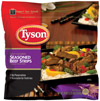
Food preservation methods primarily consisted of salting, spicing, smoking, pickling and drying prior to refrigeration using ice — the substance that evolved into its own industry in the 1800s. More than 35 commercial ice plants emerged in America by 1879 as prices decreased coupled with the growing accessibility of refrigeration using ice. About 15 million tons of ice had been distributed by 1907, tripling the consumption of 1880. Moreover, U.S. ice plants increased to more than 200 by 1889 and 2,000 by 1909. By the 1890s, natural ice as a refrigeration agent became a health problem brought on by pollution and sewage dumping.1
The emergence of mechanical refrigeration
Commercial use of frozen-food technology emerged in the 19th century with the earliest attempts focusing on freezing meats. H. Benjamin claimed one of the first patents related to freezing food in 1842, followed by Enoch Piper’s patent for his development for freezing fish in 1861. Frozen food became much more widespread later in the century with the advent of mechanical refrigerators.
Over the last 150 years or so, refrigeration as a process improved dramatically — the most important accomplishment enabled the meat industry to transport fresh and frozen meat great distances over roads, by rail, and on ships and airplanes.
In 1861, the first meat freezing plant was established in Sydney, Australia, soon followed by successful shipments of frozen meats. Another early technology — the cold-pack process — based on a slow-freezing process was developed in 1905. Food was processed and then put into large containers that went into low-temperature storage rooms to be held from one to three days until frozen solid. This technique did not hold up, however, because freezing was too slow for certain products such as vegetables that began to spoil before freezing. Also large ice crystals formed throughout food during freezing leading to a breakdown in structure and ultimately undesirable taste and appearance when thawed.
Help came in the early 1900s from Clarence Birdseye’s quick-freezing method, which was influenced by the way Native Americans preserved their food using a combination of ice, low temperatures, and wind to instantly and thoroughly freeze fish. When this fish was thawed, it looked and tasted as good as if it were fresh. In 1930, after years of development, Birdseye patented a flash-freezing system that packed meat, fish or vegetables in waxed-cardboard containers. He helped get these products in the grocery stores by co-developing refrigerated grocery display cases in 1934. Airlines began serving frozen meals in 1945. In the early 1950s thanks to freezer technology advancements, refrigeration systems became affordable as household appliances leading to the introduction of TV dinners in 1954.
Freezingtechnology basics
Refrigeration is the process of cooling a space or substance below environmental temperature. To accomplish this, the process at first removed heat through evaporation and then later in the 1850s with vapor compression that used air and subsequently ammonia as a coolant.
Basic principles apply for freezing or chilling product. Product composition determines its freeze point of 26°F, 27°F or 28°F, depending on the specific heat capacity of the product and the salt content. The faster a product is chilled or frozen, the less cell damage occurs, leading to less purge, according to an industry expert.
“The faster product is chilled, the better the shelf life and, not least, the less opportunity for bacteria to grow,” he emphasizes. “Many of the blast chillers and freezers that are in the marketplace rely on refrigerated sandwich panels. This may be a spiral or a static batch system. Unfortunately, these are great homes for Listeria monocytogenes, particularly the strain that is most often found in food facilities that have had recalls.”
One industry supplier offers an ammonia CO2 cascade system designed to reduce operating costs by 25 percent compared to regular ammonia systems. Operating temperatures can be as low as minus-65°F — the first stage Ammonia system operates at minus-10°F — compared to the minus-40°F of regular ammonia systems.
An international consortium of experts comprising a special task force for design and engineering of refrigerated warehouses, distribution centers and packinghouses offers other tips for reducing the operating cost of refrigeration systems.
According to the group, 15 to 35 percent of the total electricity costs can be reduced with certain operational measures and some investments including investigating the possibilities of peak shaving and load shifting; checks on control equipment and the settings; monitoring operational procedures that influence energy consumption; and assessing design and construction to identify energy waste and losses.
Cold-chain management
The process of producing and safeguarding perishable meat products.
Product definitions
- Fresh — product that has not been canned, cured, smoked or cooked
- Chilled — meat product with an internal temperature greater than minus-2.2°C, less than 4.4°C and is held under refrigerated conditions
- Frozen — meat product with an internal temperature of less than minus-2.2°C and is stored at less than minus-17.8°C
Goals
- Reduction of harmful bacteria
- Enhancement of product safety
- Protecting consumers
- Extending the usable shelf-life of products
- Enhancing product quality
- Proper conversion of muscle tissue into quality meat (rigor and aging)
Primary factors
- Temperature control
- Process flow control
- Contamination control
Source: U.S. Meat Export Federation
Report Abusive Comment